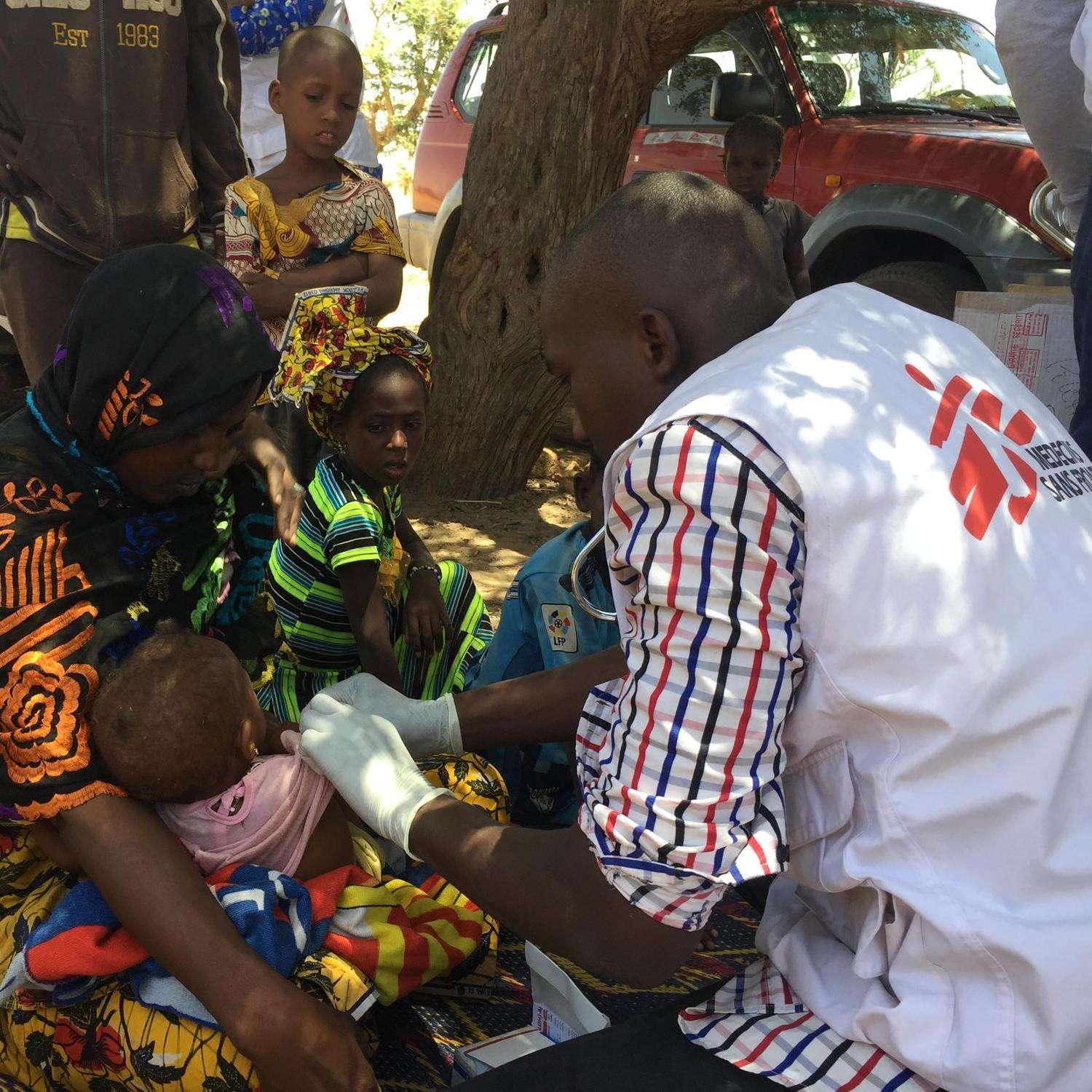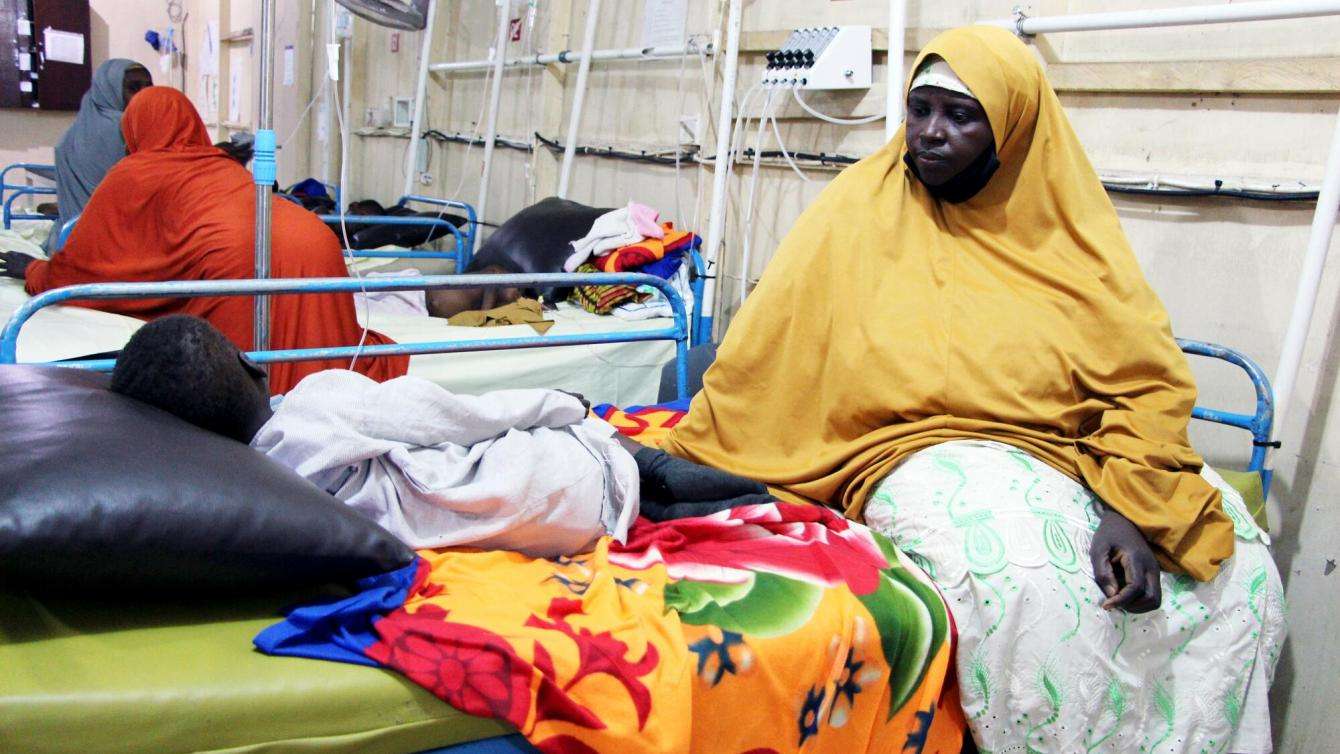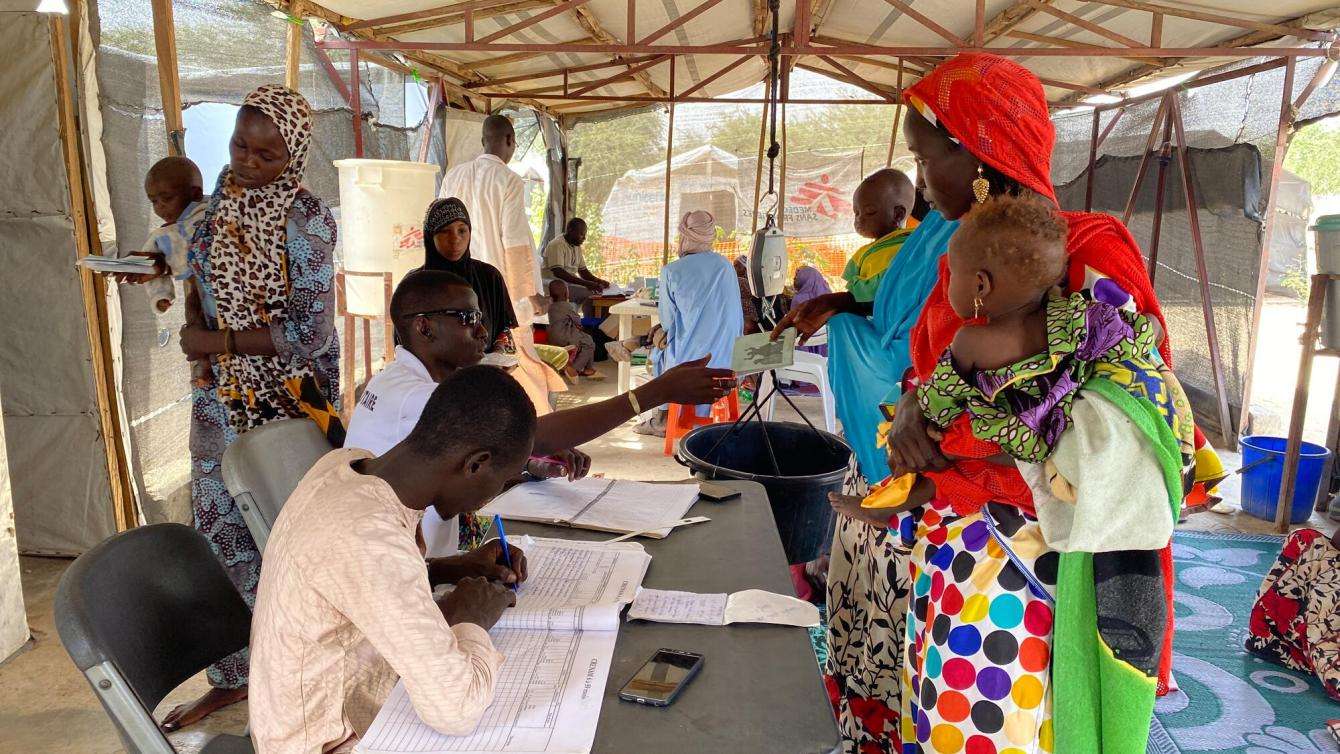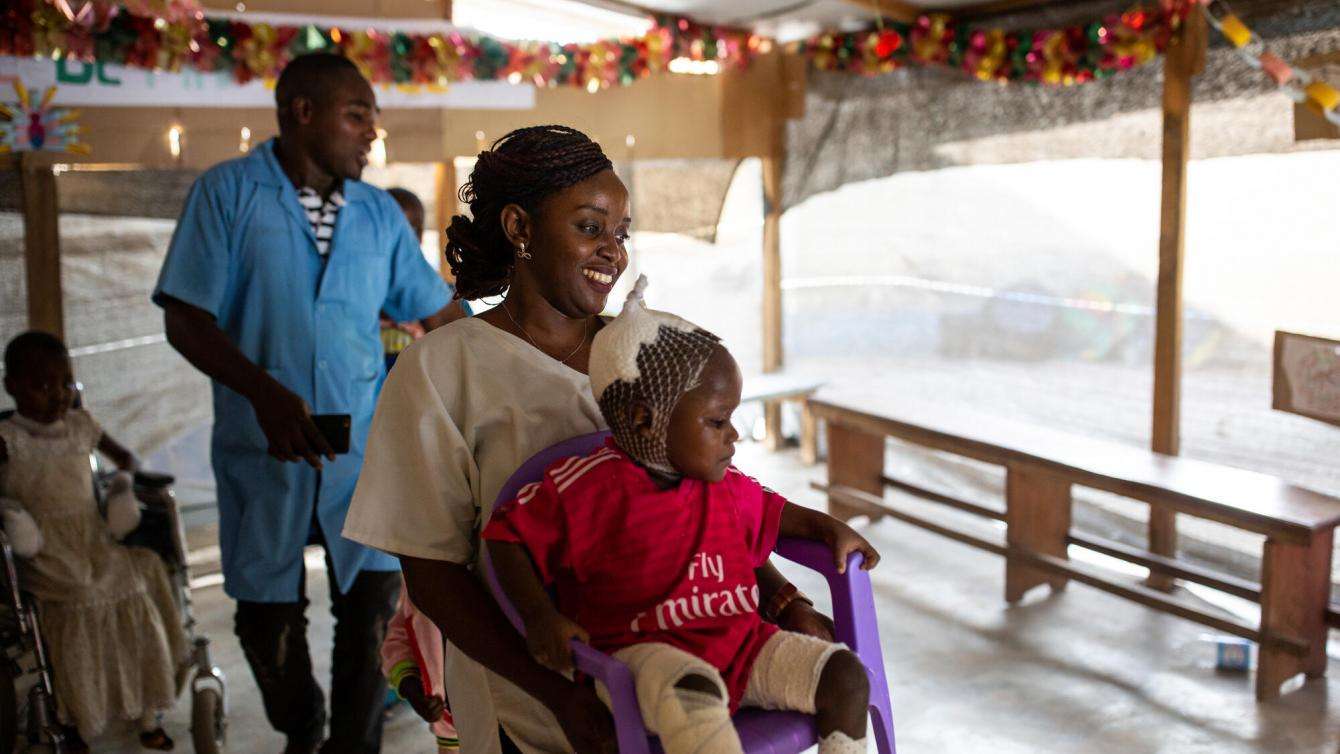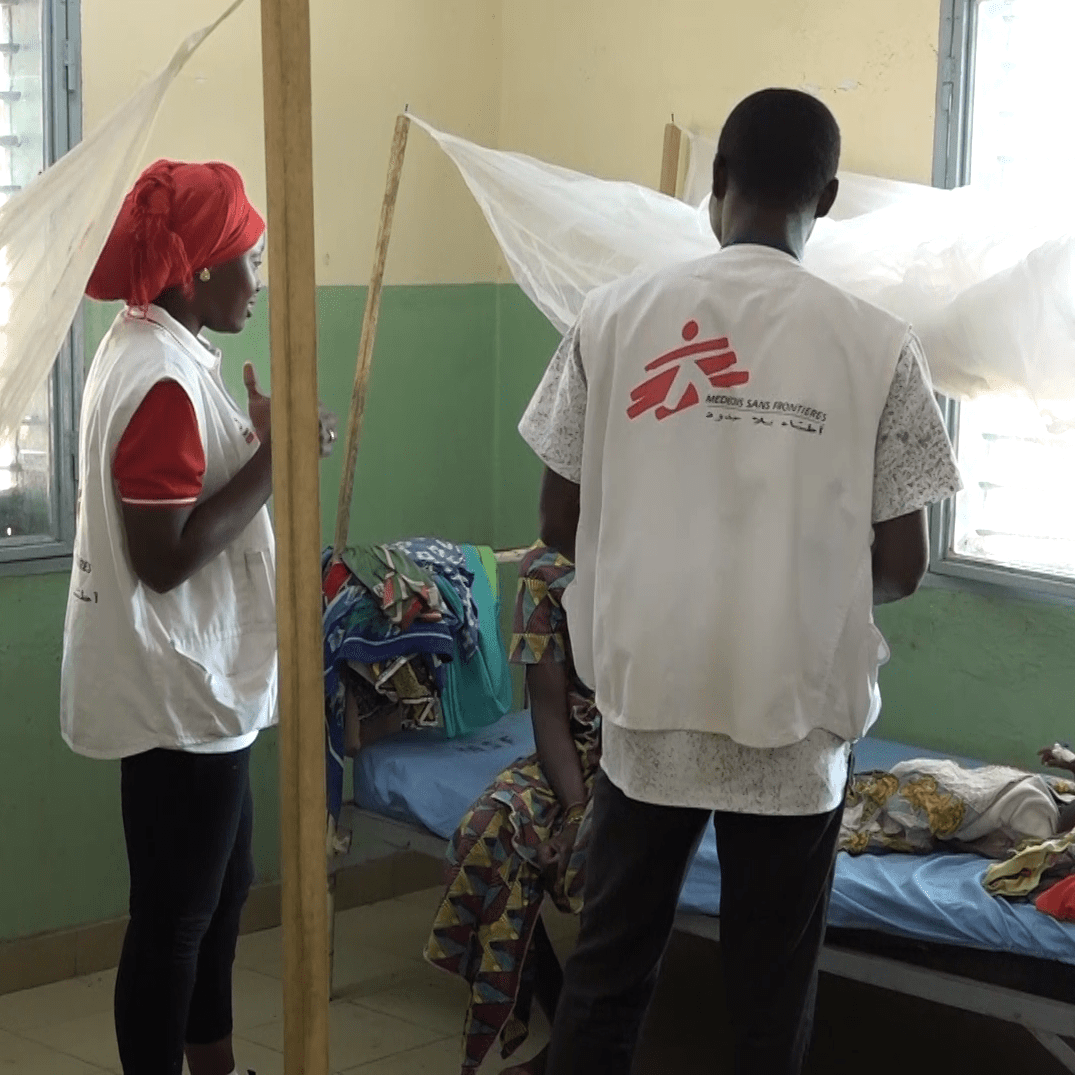Two of the most acute humanitarian crises in the world are currently taking place in the central Sahel and Lake Chad Basin regions. Africa’s Sahel region stretches across the continent from east to west—a semiarid belt that lies between the Saharan desert to north and the Sudanian savanna to the south. The region has historically experienced the most consistent and extreme droughts in Africa, which severely impact the livelihoods of people here, many of whom are semi-nomadic.
For the last decade, ethno-religious tensions, political instability, poverty, armed conflict, and natural disasters have plagued these two regions, resulting in food insecurity, mass displacement of people, and outbreaks of disease. Despite growing needs, the humanitarian response remains insufficient. In some areas, Doctors Without Borders/Médecins Sans Frontières (MSF) is the only humanitarian agency present and the only health care provider.
The focus of international and local governments is on security and strategies to fight against armed groups, neglecting the humanitarian consequences. In both the central Sahel and Lake Chad Basin, non-state armed groups strengthen their influence by filling gaps in governance and providing basic services to neglected communities, sometimes including health care.
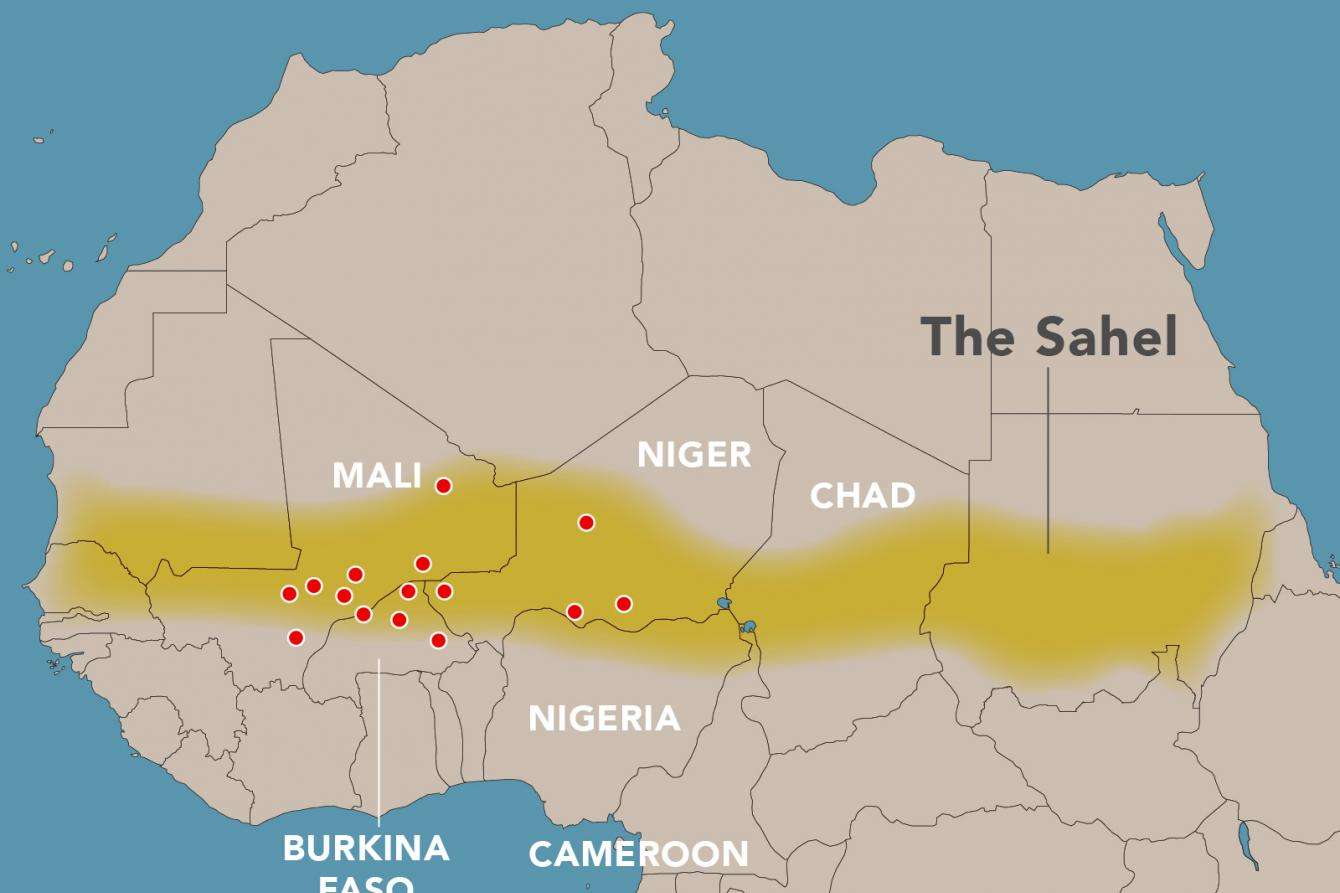
Armed conflict in the central Sahel
The central Sahel region spans Burkina Faso, Mali, and Niger. The crisis there began in January 2012, when conflict erupted in northern Mali between security forces and armed groups fighting for independence. A coup d’état followed, essentially splitting Mali in two. By the end of the year, 340,000 people were displaced within the country and approximately 145,000 people, including many health workers, had sought refuge in neighboring countries.
The crisis has since spread to northern Burkina Faso and western Niger, escalating to new levels in 2020. The three countries share a border region called the Liptako Gourma, which is affected by increasing violence perpetrated by state and non-state religious and political armed groups. These armed groups operate in an environment of growing competition over dwindling resources, exacerbated by climate change, high levels of poverty, rapid population growth, and limited access to basic services, like health care. Influential armed groups are taking advantage of existing inter-communal tensions and using targeted violence as part of their strategy to undermine people’s trust in local authorities.
Communities are exposed to violent attacks, targeted killings, abductions, and harassment. Schools, health centers, and places of worship are frequently targeted. From January 2020 to December 2020, 5,989 people were killed in armed conflict involving armed groups in the region, according to the Armed Conflict Location & Event Data Project (ACLED).
The rapidly deteriorating security situation has resulted in massive forced displacement. Across Burkina Faso, Mali, and Niger, 1,930,482 people have been displaced within their countries and 851,338 have fled to other countries, as of November 2020.
As of October 15, 2020, more than 150 health centers in the region were closed or not fully functioning, leaving millions of people without access to adequate medical services. MSF is present in the region, supporting local hospitals with case referrals and emergency responses, and providing vaccination campaigns, mental health care, and mobile clinics. We are also distributing essential items and improving access to safe water and sanitation for displaced people who have lost everything.
Mass displacement in the Lake Chad region
After five years of violence in northeastern Nigeria, in 2014 the conflict expanded further into the Lake Chad Basin—which includes northeastern Nigeria, Cameroon’s Far North region, western Chad, and southeastern Niger—creating one of the largest humanitarian crises in Africa today. Social inequality, poverty, poor infrastructure, and recurring drought also contribute to the terrible living conditions people are forced to endure. Food production and distribution have been disrupted, and MSF teams have witnessed widespread psychological trauma.

The United Nations High Commissioner for Refugees (UNHCR) estimates that almost three million people are displaced across the four countries, with more than two million people displaced in Nigeria alone, and almost 300,000 Nigerian refugees seeking safety in Chad, Cameroon, and Niger. More than 18,000 people have been killed in the conflict since January 2019, including more than 7,264 in Nigeria and 1,481 in Cameroon from January 1, 2020 to December 5, 2020, according to the ACLED.
MSF provides medical care, mental health care, social support, and essential relief items to people affected by conflict in the Diffa region in Niger, Borno State in Nigeria, and the Far North region of Cameroon.
Reaching people in need
The complex political and security situation in both regions makes it extremely challenging to access affected communities and ensure safe spaces to provide care. In certain areas of the Sahel—such as Northeastern Nigeria—official government policy completely restricts delivery of humanitarian assistance in areas that are not controlled by the military. According to the United Nations, 1.2 million people are living in areas that humanitarian organizations, including MSF, cannot access. Restrictions like this jeopardize MSF's ability to maintain our fundamental principles of impartiality, neutrality, and independence and puts both MSF and communities at risk.
Armed groups have directly targeted health care workers. Many local medical professionals have fled to safer areas. On several occasions, MSF was forced to scale back outreach activities. For example, in August 2019, MSF had to suspend medical activities following a violent attack in Niger’s Diffa region. The volatile security situation often prevents supplies—such as medicines and medical equipment—from being restocked, or emergency patients in rural communities from being referred to specialist medical facilities.
In order to continue providing health care in areas that are extremely difficult to access, we have adapted how we deliver care. In Dounetza, Mali, for example, MSF has trained community health workers to treat common illness like malaria so they do not have to leave their villages. We also expanded the types of services we provide in mobile clinics as our teams do not know when they will be able to return or when the community will next be able to access quality health care. MSF also offers telemedicine consultations via a secure messaging platform in areas that medical specialists cannot access.
In a shrinking humanitarian space, MSF and other actors must develop new strategies to ensure access to safe and timely care for all communities, while also ensuring the safety of our staff.
A mental health crisis
MSF is witnessing a mental health crisis. Our teams are treating an increasing number of patients for psychological disorders and trauma-related mental health needs during our emergency interventions after attacks, including among children. There is a huge demand for psychological care but not enough providers. Most of the countries in the region do not have trained psychologists, psychiatrists, or psychiatric nurses, so MSF has incorporated mental health care into our projects across Mali, Niger, Burkina Faso, Cameroon, and Nigeria.
COVID-19: Overshadowing emergencies
The already urgent humanitarian situation in the central Sahel and Lake Chad Basin worsened with the arrival of COVID-19. MSF adapted our programs in the region to keep them operating safely by implementing measures such as social distancing and the use of personal protective equipment (PPE).
MSF supported local COVID-19 responses in all six countries, but our focus remains on other emergencies, including seasonal peaks of malaria, mental health needs, malnutrition, and the increase in violence and displacement.
Our main concern is that the pandemic will drain resources and take attention away from other essential medical interventions. It is necessary to keep the spread of the virus under control, but that should not be done at the expense of other critical humanitarian initiatives. Since the beginning of the outbreak, MSF has been concerned about the effects of COVID-19 on routine vaccination activities and campaigns because of restrictions on movements and gatherings, and a lack of PPE. The fear of getting infected while visiting health centers also prevents people from accessing care.
It is estimated that COVID-19 has accounted for less than 1 percent of deaths in Africa in 2020, but it continues to be the focus of many emergency response plans in the region. This has hampered existing efforts to reduce transmission of other deadly diseases. Malaria, for example, is 10 times more deadly than COVID-19 in Africa. In 2019, the continent recorded 384,000 deaths due to malaria, according to the World Health Organization. In the Sahel region, the peak malaria period was more severe and has lasted longer than in previous years. The rainy season was longer and heavier than usual, and national malaria prevention activities—such as large-scale mosquito net distributions—were reduced or postponed due to COVID-19 restrictions and the reallocation of vital resources.
In Cameroon, we have seen how allocating national health system staff and material resources towards COVID-19 has increased the risk of other outbreaks from diseases such as cholera and measles, which are endemic in Cameroon.
Continuity of care is crucial for communities and patients affected by other diseases, which means that the pandemic response has to be integrated into the regular health care system. COVID-19 continues to monopolize media attention around the world, but MSF is committed to raising awareness about these neglected crises.

